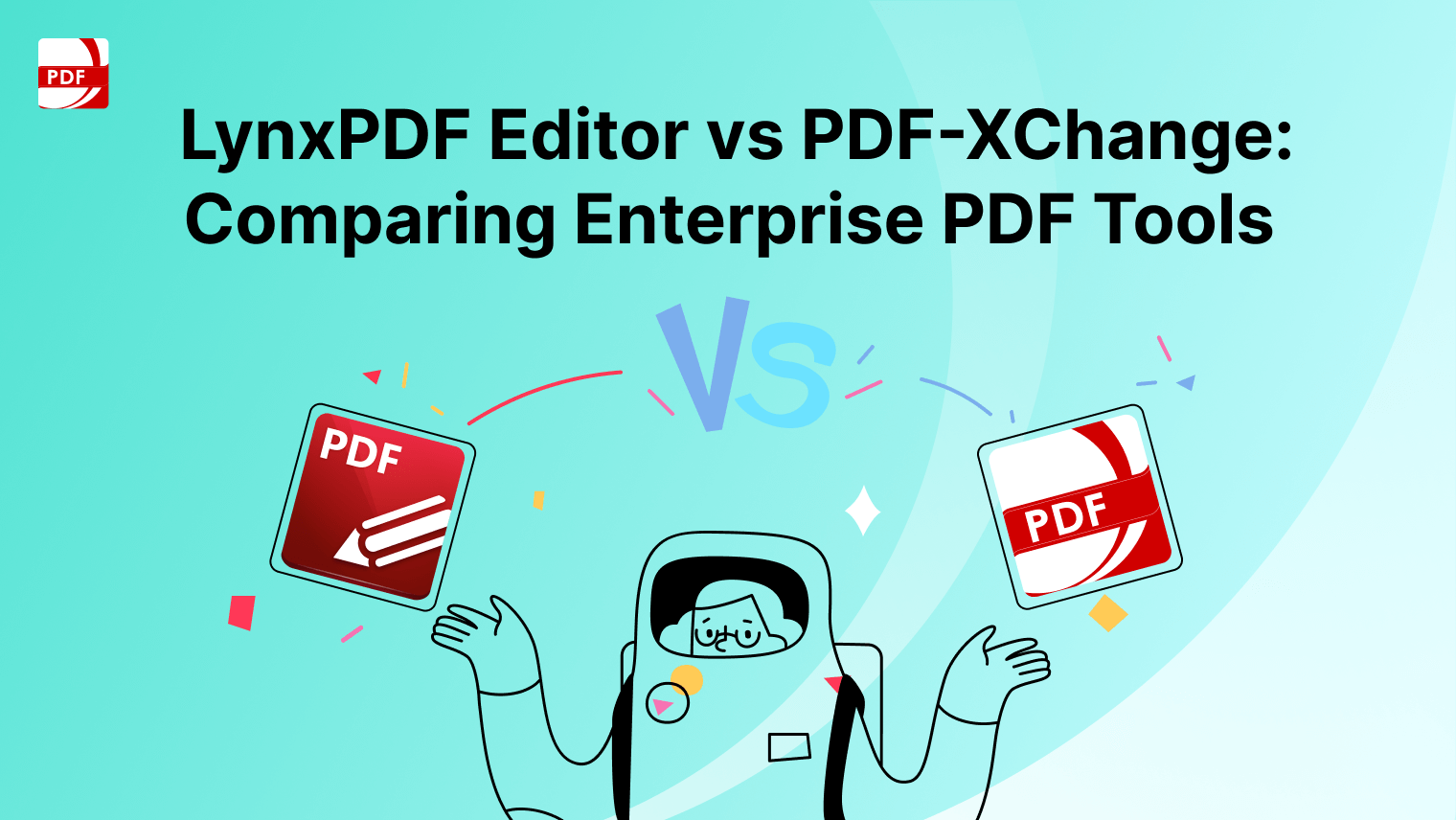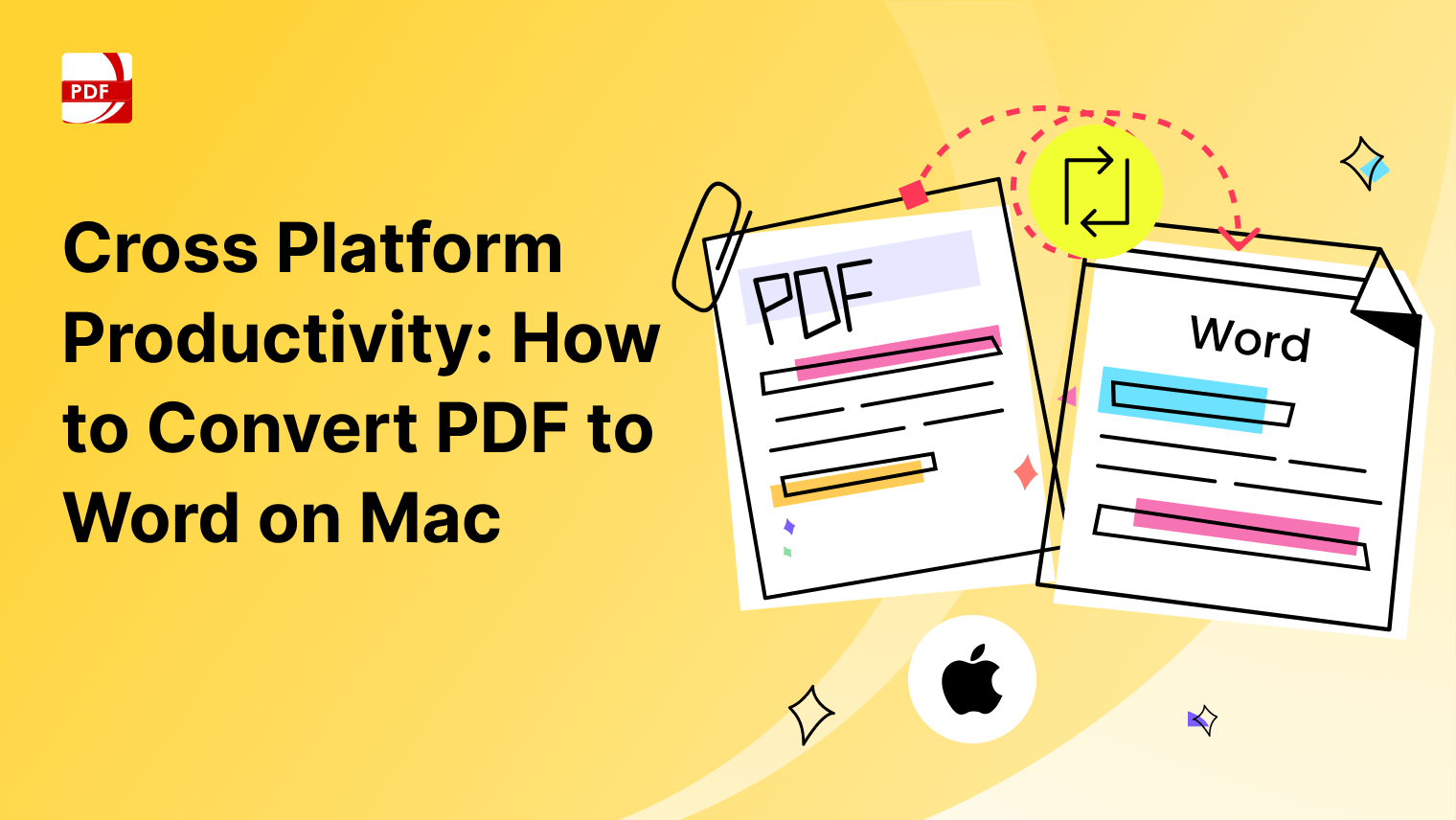PDFs have become the bedrock of digital documentation. Their ability to maintain consistent formatting across different devices and platforms makes them indispensable.
Working with PDFs can often present challenges that affect efficiency and productivity. An optimized PDF workflow is, therefore, essential for managing these documents effectively and ensuring that the information they contain is accessible, secure, and easy to work with.
Essential Tips for Optimizing PDF Workflow
1. Advanced Editing Capabilities
PDF Reader Pro offers a comprehensive editing suite that allows users to directly modify text, images, and pages within PDF documents. This feature is essential for making quick corrections, updating information, or customizing PDF layouts, ensuring that your documents always remain current and relevant.
2. Comprehensive Annotation Tools
The software provides a wide array of annotation tools, including highlighting text, underlining key points, and using strike-throughs for obsolete information. Additionally, users can add detailed comments, sticky notes, and personalized stamps, making it an ideal tool for collaborative reviews and in-depth document analysis.
3. Optical Character Recognition (OCR)
With OCR technology, PDF Reader Pro turns scanned documents and images into editable and searchable PDF files. This feature supports multiple languages, making it an invaluable tool for handling international documents and digitizing paper archives.
4. Versatile Document Conversion
This feature enables the conversion of PDFs into various other formats such as Word, Excel, PowerPoint, HTML, and plain text. Moreover, it allows for the export of PDF pages as image formats like JPEG and PNG, facilitating easy sharing and presentation of document content.
5. Form Creation and Filling
PDF Reader Pro simplifies the creation of fillable PDF forms, making it easier to gather information and conduct surveys. It also includes functionality for inserting and managing digital signatures, thus providing a secure and efficient way to authorize documents.
6. Document Merging and Splitting
Users can effortlessly merge multiple PDF files into a single document or split a single PDF into multiple documents. This feature is particularly useful for organizing large volumes of information and tailoring document sizes to specific needs.
7. Enhanced Document Security
The software offers robust security features, including password encryption to protect sensitive information. It allows users to set specific permissions, controlling who can print, copy, or edit the PDF, thus ensuring document integrity and confidentiality.
8. Batch Processing
Batch processing capabilities enable the simultaneous execution of actions like conversion, watermarking, and encryption across multiple files. This feature saves time and streamlines repetitive tasks in large-scale document management scenarios.
9. Efficient Bookmark Management
PDF Reader Pro allows for the creation and organization of bookmarks within PDF documents. This feature enhances navigation, especially in lengthy documents, making it easier to locate and reference key sections.
10. Accessible Reading Mode
The software includes a distraction-free reading mode, which is ideal for reviewing lengthy documents. Its text-to-speech feature further enhances accessibility, catering to a diverse range of user needs, including those with visual impairments.
12. Collaboration and Sharing Tools
The tool enables effective collaboration with features that allow for adding comments and gathering team feedback directly within PDFs. It also simplifies the sharing of documents, ensuring efficient and streamlined communication among teams and stakeholders.
How to Convert Documents for Windows
Step 1: Download PDF Reader Pro
Step 2: Import the Document
Click on the "File" menu at the top of the application and open the desired file.
Step 3: Access the Conversion Tool
Look for a toolbar or menu option labeled "Convert" or something similar.
Step 4: Select the Desired Output Format
You'll find a list of formats to which you can convert your document. These typically include Word, Excel, PowerPoint, text, and image formats such as JPEG or PNG.
Step 5: Convert the Document
The conversion time will depend on the size and complexity of the document.
Step 6: Verify the Converted Document
It’s always good practice to open and review the converted document to ensure that the conversion process accurately preserved your formatting and content.
How to Convert Documents for Mac
Step 1: Download PDF Reader Pro on Your Mac
Step 2: Import the Document
Click on the "File" menu in the top menu bar, then select "Open".
Browse through your files and select the document you want to convert.
Step 3: Navigate to the Conversion Tool
Locate the "Convert" button in the top toolbar. This may also be found under a menu labeled “Tools” or similar.
Step 4: Choose the Output Format
In the convert menu, you'll see various format options like Word, Excel, PowerPoint, HTML, text, and image formats (e.g., JPEG, PNG).
Step 5: Start the Conversion
The time taken for conversion will depend on the document’s size and complexity.
Step 7: Review the Converted Document
It’s important to open and check the converted document to ensure all content and formatting are correctly transferred and intact.
Optimizing PDF Workflow: Best Practices
In the realm of modern business operations, optimizing PDF workflow is not just a convenience but a necessity. With an array of document types and the increasing reliance on digital workflows, understanding how to effectively manage PDFs is crucial.
Here, we explore the best practices for optimizing your PDF workflow, integrating advanced optimization techniques and tools for maximum efficiency.
1. Recognizing the Value of Different Document Types
Different document types, from paper documents to digital files, require tailored handling methods. While paper documents still play a role, converting them to digital format in a single shift can streamline processes. For instance, in an onboarding process, transforming paper forms into editable PDFs accelerates data entry and storage.
2. Leveraging Mobile Devices for Workflow Flexibility
Mobile devices have become valuable assets in workflow systems. They allow for the management and editing of PDFs on-the-go. This mobility is especially beneficial in fields like manufacturing workflows, where real-time updates and visual representation of data are pivotal.
3. Streamlining Accounts Payable and Other Financial Processes
In financial sectors, such as accounts payable, workflow automation tools can significantly reduce manual intervention. Converting invoices and receipts into PDFs searchable through OCR (Optical Character Recognition) technology is a crucial step towards advanced optimization.
4. Integrating Workflow Systems with PDF Workflow Software
Workflow integrations, such as connecting your PDF workflow software with existing CRM or ERP systems, ensure seamless data transfer. This integration is a cornerstone of successful workflow optimization, particularly in agile workflows and agile project management workflows.
5. Embracing Technological Advancements for Enhanced Efficiency
Technological advancements have led to the development of advanced PDF workflow tools. These tools not only make handling PDFs easier but also turn them into interactive documents, enhancing the user experience and efficiency.
6. Workflow Normalization Through Design Workflow
Normalizing workflows by standardizing document layouts and formats, particularly in design workflows, ensures consistency and reduces errors. Utilizing templates and predefined formats in PDFs can be a significant aspect of workflow optimization.
7. Implementing Workflow Automation Tools for Repetitive Tasks
Automating repetitive tasks using workflow automation tools cuts down the time spent on manual processing. This automation is crucial in areas like approval workflow solutions, where consistency and speed are key.
8. Enhancing Accessibility and Searchability of PDFs
Making PDFs searchable and easily accessible is a vital component of digital workflows. This includes using OCR technology to convert scanned documents into searchable text and implementing proper file naming and storage practices.
9. Considering Workflow Integrations in Asset Management
Incorporating PDFs as an integral asset in workflows, especially in asset management, helps maintain accurate and up-to-date records. Workflow integrations enable synchronization of data across various platforms, enhancing accessibility and reliability.
10. Focusing on the Human Element in Workflow Systems
Despite the emphasis on technology, the human element remains crucial. Training staff to efficiently use advanced PDF workflow tools and understand the importance of each aspect of workflow optimization is essential. This training ensures that technological tools are used to their fullest potential.
Optimizing PDF Workflow: FAQ
What Is PDF Workflow Optimization?
PDF workflow optimization refers to the process of enhancing the efficiency and effectiveness of managing and processing PDF documents within an organization's workflow. This includes speeding up document handling, reducing manual tasks, and integrating advanced tools for better PDF management.
How Can PDF Workflow Optimization Benefit My Business?
Optimizing your PDF workflow can lead to significant benefits such as time savings, reduced errors, improved document security, enhanced collaboration, and increased overall productivity. It streamlines document processing and ensures consistent document handling across the organization.
What Tools Are Essential for Optimizing PDF Workflow?
Key tools for optimizing PDF workflow include PDF editing and conversion software, OCR technology for making PDFs searchable, workflow automation tools, and integration capabilities with other business systems like CRM and ERP.
Can Mobile Devices Be Used Effectively in PDF Workflow?
Yes, mobile devices can play a crucial role in optimizing PDF workflows. They offer flexibility and accessibility, allowing employees to view, edit, and share PDF documents on-the-go, which is particularly useful in dynamic and mobile work environments.
How Does PDF Workflow Optimization Impact the Onboarding Process?
In the onboarding process, optimizing PDF workflow can streamline the handling of employee documentation, reduce the time for document processing, and improve the overall experience for new hires by ensuring efficient and smooth document management.
What Are the Challenges in PDF Workflow Optimization?
Challenges in PDF workflow optimization can include managing different document types, ensuring compatibility across various devices, maintaining document security, and integrating PDF management tools with existing workflow systems.
How Can I Convert Paper Documents to Optimized PDFs?
Paper documents can be converted to optimized PDFs using scanners with OCR capabilities. This process involves scanning the paper documents and using OCR software to convert them into editable and searchable PDF formats.
What Is the Role of OCR in PDF Workflow Optimization?
OCR (Optical Character Recognition) is crucial in PDF workflow optimization as it converts scanned, image-based documents into editable and searchable text. This facilitates easy data retrieval and reduces the need for manual data entry.
Can Workflow Automation Tools Be Integrated with PDF Software?
Yes, many PDF software solutions offer integration capabilities with workflow automation tools. This allows for seamless data transfer and automated processing of PDF documents within the larger business workflow.
How Does PDF Optimization Fit into Digital Workflows?
PDF optimization fits into digital workflows by providing a standardized and efficient way to handle documents. It ensures that PDFs are easily accessible, editable, and shareable across various digital platforms, enhancing the overall workflow efficiency.



